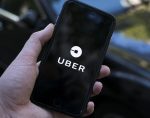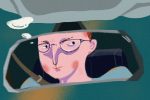In December 2016, Arizona started a partnership with Uber that allowed the ride-hailing company to test their self-driving cars on Arizona roads.
According to The New York Times, on March 20, a self-driving car with an emergency backup driver struck and killed Elaine Herzberg, a 49-year-old woman, Sunday night around 10 p.m. in Tempe, Arizona.
Following this development, Uber temporarily terminated their self-driving trials in not only Arizona, but Pittsburgh, San Francisco and Toronto.
Uber and other technology-driven companies claim that self-driving cars will be safer because no humans will be in control. Humans tend to be distracted while they’re on the road and once a person takes their eyes off the road, it could cost them their life.
Based on the same New York Times article, Sgt. Ronald Elcock conducted an investigation surrounding the details of the incident and found that the car was moving at 40 miles per hour. Along with that, the car had no signs of slowing down and the Uber safety driver was in the right state of mind.
Arizona wanted to market its state as a regulatory-free zone to attract ride hailing apps and technology-driven companies out from Silicon Valley, California. The governor of Arizona, Doug Ducey, created an executive order to make this regulatory-free zone possible because he believed it would boost their economy.
This is not the first time there has been an incident with a self-driving car. Last year, there was a car accident between a self-driving car and another vehicle. The local police department and Ducey believed the lack of regulation should be maintained because it was not the fault of the self-driving car.
Uber made a statement about the self-driven accident. Their spokesperson, Sarah Abboud, said: “Our hearts go out to the victim’s family,” and “We are fully cooperating with local authorities in their investigation of this incident.”
@TempePolice release video of deadly crash involving #Uber's self-driving car in Tempe. Who do you think is at fault? Uber? Driver? Woman pushing bicycle? #azfamily pic.twitter.com/laQww9OiS3
— Marc Ybarra (@nycnewsproducer) March 21, 2018
How does this relate to college students? Well, for many students, Uber is a very convenient way of picking people up and traveling from point A to point B. With the expansion into carpooling and delivery service in both UBERPool and UBEREats, respectively, the company has no plan of shutting down anytime soon.
For now, self-driving cars are only in Arizona, California, Pittsburgh and San Francisco, but soon there will be a shift to self-driving cars in the United States.
In an article on Odyssey, Jennifer Prushan, who studies at the University of Michigan, goes into detail about how Uber has helped her and other college students out of tricky situations.
With that in mind, it is possible that self-driving cars will be the norm in a couple of years and can end up putting college students at risk — both for a damaged vehicle and damaged bodies.
How will the car know when to stop if there is a pedestrian walking by while it’s driving? Michael Bennett, an associate professor at Arizona State University who looks into people’s reactions to AI, told the New York Times he knows one thing for sure: “These companies have to prove the technology is safe before advocating for it.”

















